Explore Cuneo – Italy’s gateway to the Maritime Alps
About Cuneo
Cuneo is a small, elegant city in Italy’s north western region of Piedmont which, for centuries, has been the gateway to the Maritime Alps and on into France. It has almost 1,000 years of history and has been passed back and forth between France and Italy over the centuries. Famous for its silk industry and chestnuts, today it is a hotspot for food lovers, especially chocolate fans, who follow in the footsteps of Hemingway to try the celebrated rum-flavoured pralines. It has attractive piazzas, porticoed streets with beautiful palaces and churches to visit, and is the starting point for many wanting to explore the mountains on foot or by bike. This is the final stop on our France and the Maritime Alps tour which will run again in June 2024.
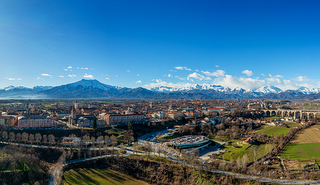
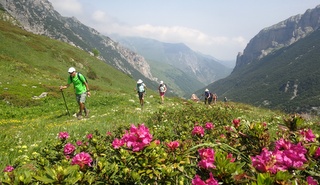
Where is Cuneo?
Cuneo is the southern most city in the region of Piedmont. It is named after the Italian word for a wedge, sitting as it does on a wedge of land between the Stura di Demonte and Gesso rivers, to the south of Turin. It sits in the shadow of the Maritime Alps, once a prized hunting ground for the Kings of Savoy, but is less than 50 miles from the Ligurian Sea as the crow flies.
History of Cuneo
Founded in 1198 by fugitives from baronial feuds and Lombard refugees from Milan, Cuneo later belonged to the house of Anjou, and then in 1382 it was bought by the House of Savoy. Thanks to its strong fortifications and massive protective walls, Cuneo withstood seven sieges during the 16th–18th centuries. It was ceded to France by the Armistice of Cherasco in 1796 after Napoleon’s Battle of Mondovi, but then returned to the House of Savoy in 1814. In WWII, Cuneo played an important role in the anti-fascist resistance movement, with local lawyer Duccio Galimberti becoming a heroic figure in the fight.
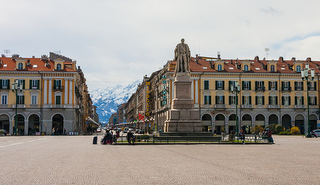
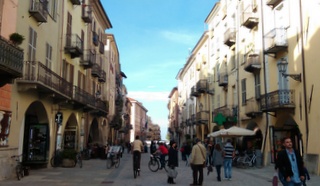
Things to do in Cuneo
Piazza Galimberti
The enormous city square is dedicated to Duccio Galimberti, mentioned above. The huge space is surrounded by porticoed palazzi and contains the Casa-Museo Galimberti, home of the local hero. On display are paintings, sculptures and family memories of his life and work and the museum is usually open at weekends. Leading from the Piazza is Via Roma, the beating heart of the city and the main arterial route over time for all travellers and traders passing through.
Museo Civico
The Civic Museum of Cuneo is situated within the complex of the San Francesco church and convent. The museum houses pre-historic, Roman and medieval exhibits, a collection of local sacred art and Piedmontese paintings from the 19th and 20th centuries. There is also an ethnographic section of the museum with instruments, tools and traditional clothes from the surrounding alpine valleys.
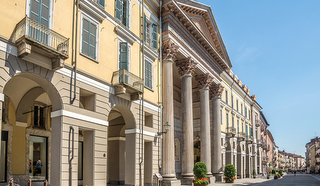
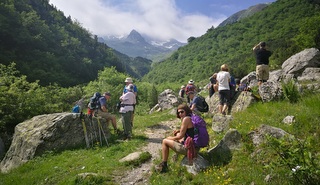
The Duomo
La Cattedrale Santa Maria del Bosco is the city’s Cathedral. Built and re-built over the centuries, is has an impressive neo-classical facade and inside nine chapels on each side of the main nave. The striking altarpiece was painted by Baroque master Andrea Pozzo.
Soleri Viaduct
The old and modern cities are linked by the great Soleri viaduct built over the Stura di Demonte river. Both a rail and road bridge, the construction took over 20 years to complete.
What to eat and drink in Cuneo
Piedmont is the birthplace of the Slow Food movement and it is hard to eat badly in this region. Cuneo’s speciality is the Cuneesi al Rhum, large rum-flavoured pralines wrapped in cellophane. Highlights from the area are the artisan alpine cheeses, such as the square-shaped Raschera and the blue cheese Castelmagno. Also held in high esteem are the veal sausages from Bra, the white truffles from Alba and the beautiful risottos from the Po plains. Bollito misto (boiled meats), vitello tonnato and the tasty Bagna Caôda anchovy dip are all fabulous local dishes worth a try. Piedmont is home to some truly legendary wines. Treat yourself to a Barolo or Barbaresco produced from the native nebbiolo grapes. Good value red wines are made with the Barbera and Dolcetto grapes and for whites look out for Roero Arneis, Gavi and Erbaluce. If you like a sweet wine, then taste a local Moscato or Asti Spumante.
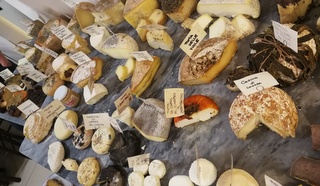
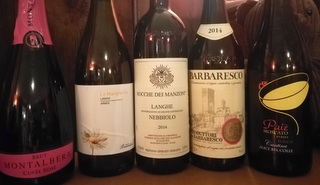
Getting to Cuneo
Cuneo does have an airport, although destinations at the time of writing are limited to Sardinia, Sicily and Casablanca. Turin, Nice or Genoa are the closest international airports. Cuneo Altipiano Railway Station is the main station in the city, and is located in Piazzale della Libertà, with rail links to Saluzzo, Turin, Nice and Mondovi. If arriving by car, the A6 Turin-Savona is the nearest motorway.
